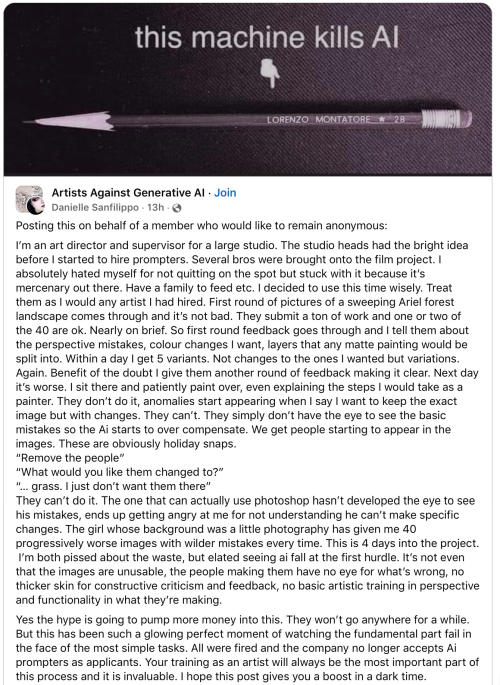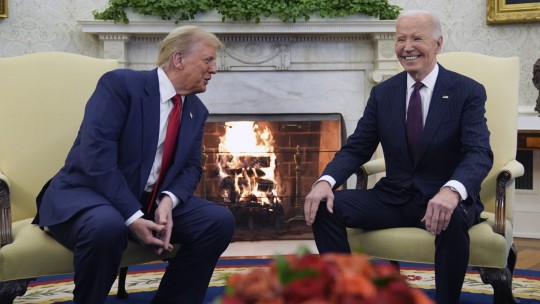Happiness Will Come To You.
Happiness Will Come To You.
More Posts from Mothymyths and Others
this is an anti british royal family blog. i hope all the commonwealth remove them as head of state and they're forced to give all their wealth back to where they stole it from. likes charge reblogs cast
This machine kills AI

Please make a post about the story of the RMS Carpathia, because it's something that's almost beyond belief and more people should know about it.
Carpathia received Titanic’s distress signal at 12:20am, April 15th, 1912. She was 58 miles away, a distance that absolutely could not be covered in less than four hours.
(Californian’s exact position at the time is…controversial. She was close enough to have helped. By all accounts she was close enough to see Titanic’s distress rockets. It’s uncertain to this day why her crew did not respond, or how many might not have been lost if she had been there. This is not the place for what-ifs. This is about what was done.)
Carpathia’s Captain Rostron had, yes, rolled out of bed instantly when woken by his radio operator, ordered his ship to Titanic’s aid and confirmed the signal before he was fully dressed. The man had never in his life responded to an emergency call. His goal tonight was to make sure nobody who heard that fact would ever believe it.
All of Carpathia’s lifeboats were swung out ready for deployment. Oil was set up to be poured off the side of the ship in case the sea turned choppy; oil would coat and calm the water near Carpathia if that happened, making it safer for lifeboats to draw up alongside her. He ordered lights to be rigged along the side of the ship so survivors could see it better, and had nets and ladders rigged along her sides ready to be dropped when they arrived, in order to let as many survivors as possible climb aboard at once.
I don’t know if his making provisions for there still being survivors in the water was optimism or not. I think he knew they were never going to get there in time for that. I think he did it anyway because, god, you have to hope.
Carpathia had three dining rooms, which were immediately converted into triage and first aid stations. Each had a doctor assigned to it. Hot soup, coffee, and tea were prepared in bulk in each dining room, and blankets and warm clothes were collected to be ready to hand out. By this time, many of the passengers were awake–prepping a ship for disaster relief isn’t quiet–and all of them stepped up to help, many donating their own clothes and blankets.
And then he did something I tend to refer to as diverting all power from life support.
Here’s the thing about steamships: They run on steam. Shocking, I know; but that steam powers everything on the ship, and right now, Carpathia needed power. So Rostron turned off hot water and central heating, which bled valuable steam power, to everywhere but the dining rooms–which, of course, were being used to make hot drinks and receive survivors. He woke up all the engineers, all the stokers and firemen, diverted all that steam back into the engines, and asked his ship to go as fast as she possibly could. And when she’d done that, he asked her to go faster.
I need you to understand that you simply can’t push a ship very far past its top speed. Pushing that much sheer tonnage through the water becomes harder with each extra knot past the speed it was designed for. Pushing a ship past its rated speed is not only reckless–it’s difficult to maneuver–but it puts an incredible amount of strain on the engines. Ships are not designed to exceed their top speed by even one knot. They can’t do it. It can’t be done.
Carpathia’s absolute do-or-die, the-engines-can’t-take-this-forever top speed was fourteen knots. Dodging icebergs, in the dark and the cold, surrounded by mist, she sustained a speed of almost seventeen and a half.
No one would have asked this of them. It wasn’t expected. They were almost sixty miles away, with icebergs in their path. They had a respondibility to respond; they did not have a responsibility to do the impossible and do it well. No one would have faulted them for taking more time to confirm the severity of the issue. No one would have blamed them for a slow and cautious approach. No one but themselves.
They damn near broke the laws of physics, galloping north headlong into the dark in the desperate hope that if they could shave an hour, half an hour, five minutes off their arrival time, maybe for one more person those five minutes would make the difference. I say: three people had died by the time they were lifted from the lifeboats. For all we know, in another hour it might have been more. I say they made all the difference in the world.
This ship and her crew received a message from a location they could not hope to reach in under four hours. Just barely over three hours later, they arrived at Titanic’s last known coordinates. Half an hour after that, at 4am, they would finally find the first of the lifeboats. it would take until 8:30 in the morning for the last survivor to be brought onboard. Passengers from Carpathia universally gave up their berths, staterooms, and clothing to the survivors, assisting the crew at every turn and sitting with the sobbing rescuees to offer whatever comfort they could.
In total, 705 people of Titanic’s original 2208 were brought onto Carpathia alive. No other ship would find survivors.
At 12:20am April 15th, 1912, there was a miracle on the North Atlantic. And it happened because a group of humans, some of them strangers, many of them only passengers on a small and unimpressive steam liner, looked at each other and decided: I cannot live with myself if I do anything less.
I think the least we can do is remember them for it.

“TO BE HOPEFUL in bad times is not just foolishly romantic. It is based on the fact that human history is a history not only of cruelty, but also of compassion, sacrifice, courage, kindness. What we choose to emphasize in this complex history will determine our lives. If we see only the worst, it destroys our capacity to do something. If we remember those times and places—and there are so many—where people have behaved magnificently, this gives us the energy to act, and at least the possibility of sending this spinning top of a world in a different direction. And if we do act, in however small a way, we don’t have to wait for some grand utopian future. The future is an infinite succession of presents, and to live now as we think human beings should live, in defiance of all that is bad around us, is itself a marvelous victory.”
— Howard Zinn (via freckles-and-books)

I'm going to just copy the whole damn thing below so people know that these efforts are happening:
WASHINGTON (AP) — Biden administration officials are working against the clock doling out billions in grants and taking other steps to try to preserve at least some of the outgoing president’s legacy before President-elect Donald Trump takes office in January.
“Let’s make every day count,” President Joe Biden said in an address to the nation last week after Vice President Kamala Harris conceded defeat to Trump in the presidential race.
Trump has pledged to rescind unspent funds in Biden’s landmark climate and health care law and stop clean-energy development projects.
“There’s only one administration at a time,” Transportation Secretary Pete Buttigieg told reporters at a news conference Thursday. “That’s true now, and it will also be true after January 20th. Our responsibility is to make good use of the funds that Congress has authorized for us and that we’re responsible for assigning and disbursing throughout the last three years.”
But Trump will control more than the purse strings come January. His administration also can propose new regulations to undo some of what the Biden administration did through the rule-making process.
Here are some of the moves the Biden administration is taking now:
Getting infrastructure spending out the door
Biden administration officials hope that projects funded under the $1 trillion infrastructure law and $375 billion climate law will endure beyond Biden’s term and are working to ensure that money from the landmark measures continues to flow.
On Friday, Buttigieg announced over $3.4 billion in grants for projects designed to improve passenger rail service, help U.S. ports, reduce highway deaths and support domestic manufacturing of sustainable transportation materials.
”We are investing in better transportation systems that touch every corner of the country and in the workers who will manufacture materials and build projects,″ he said. “Communities are going to see safer commutes, cleaner air and stronger supply chains that we all count on.″
Speeding up environmental goals
Announcements of major environmental grants and project approvals have sped up in recent months in what White House officials describe as “sprinting to the finish” of Biden’s four-year term.
The Environmental Protection Agency recently set a nationwide deadline for removal of lead pipes and announced nearly $3 billion to help local water systems comply. The agency also announced that oil and gas companies for the first time will have to pay a federal fee if they emit dangerous methane above certain levels.
The Energy Department, meanwhile, announced a $544 million loan to a Michigan company to expand manufacturing of high-quality silicon carbide wafers for electric vehicles. The loan is one of 28 deals totaling $37 billion granted under a clean-energy loan program that was revived and expanded under Biden.
“There is a new urgency to get it all done. We’re seeing explosions of money going out the door,” said Melinda Pierce, legislative director of the Sierra Club. Biden and his allies ”really want to finish the job they started.”
Ukraine aid
Pentagon press secretary Sabrina Singh told reporters this week that Biden wants to “spend down the authority that Congress has allocated and authorized before he leaves office. So we’re going to work very hard to make sure that happens.”
The Biden administration would have to rush $7.1 billion in weapons — $4.3 billion from the 2024 supplemental and $2.8 billion that is still on the books in savings due to the Pentagon recalculating the value of systems sent — from the Pentagon’s stockpiles in order to spend all of those funds obligated before Trump is sworn in.
There’s also another $2.2 billion available to put weapons systems on long-term contracts. However, recent aid packages have been much smaller in size, around $200 million to $300 million each.
Defense Secretary Lloyd Austin has said the funds are already obligated, which should make them harder to take back because the incoming administration would have to reverse that.
Pressure to quickly confirm judicial picks
Another priority for the White House is getting Senate confirmation of as many federal judges as possible before Trump’s inauguration on Jan. 20.
The Senate this week voted 51-44 to confirm former prosecutor April Perry as a U.S. District Court judge in northern Illinois. More than a dozen pending judicial nominees have advanced out of the Senate Judiciary Committee; eight judicial nominations are awaiting committee votes and six are waiting for committee hearings.
Trump has urged Republicans to oppose efforts to confirm judicial nominees. “No Judges should be approved during this period of time because the Democrats are looking to ram through their Judges as the Republicans fight over Leadership,” he wrote on social media site X on Nov. 10, before congressional Republicans chose their new leaders.
Student loan forgiveness
The Education Department has been hurrying to finalize a new federal rule that would cancel student loans for people who face financial hardship. The proposal — one of Biden’s only student loan plans that hasn’t been halted by federal courts — is in a public comment period scheduled to end Dec. 2.
After that, the department would have a narrow window to finalize the rule and begin carrying it out, a process that usually takes months. Like Biden’s other efforts, it would almost certainly face a legal challenge.
Additionally, the Biden administration has room to speed up student loan cancellation for people who were already promised relief because they were cheated by their colleges, said Aaron Ament, an Education Department official for the Obama administration and president of the National Student Legal Defense Network.
Education Secretary Miguel Cardona could decide that case and others rather than hand them off to the Trump administration, which is expected to be far friendlier to for-profit colleges. “It’s a no-brainer,” Ament said. “There’s a good number of cases that have been sitting on Cardona’s desk. It’s hard to imagine that those would just be left untouched.”
Trump has not yet said what he would do on student loan forgiveness. However, he and Republicans have criticized Biden’s efforts.

Happy November!

what is HAPPENING


-
 revnren reblogged this · 1 month ago
revnren reblogged this · 1 month ago -
 pasta-blends liked this · 1 month ago
pasta-blends liked this · 1 month ago -
 moss-time-yall reblogged this · 1 month ago
moss-time-yall reblogged this · 1 month ago -
 all-hate-disney reblogged this · 1 month ago
all-hate-disney reblogged this · 1 month ago -
 nojglisrenaissance reblogged this · 1 month ago
nojglisrenaissance reblogged this · 1 month ago -
 eepless-eff reblogged this · 1 month ago
eepless-eff reblogged this · 1 month ago -
 eepless-eff liked this · 1 month ago
eepless-eff liked this · 1 month ago -
 thelovelymoongoddess reblogged this · 1 month ago
thelovelymoongoddess reblogged this · 1 month ago -
 marta-bee liked this · 1 month ago
marta-bee liked this · 1 month ago -
 khalko reblogged this · 1 month ago
khalko reblogged this · 1 month ago -
 rapz-rites liked this · 1 month ago
rapz-rites liked this · 1 month ago -
 skrytch reblogged this · 1 month ago
skrytch reblogged this · 1 month ago -
 dying-isnt-good-for-your-health liked this · 1 month ago
dying-isnt-good-for-your-health liked this · 1 month ago -
 eli-reads liked this · 1 month ago
eli-reads liked this · 1 month ago -
 inspired333 liked this · 1 month ago
inspired333 liked this · 1 month ago -
 braveincafleet reblogged this · 1 month ago
braveincafleet reblogged this · 1 month ago -
 bluegemini156 liked this · 1 month ago
bluegemini156 liked this · 1 month ago -
 echo-is-super-cool reblogged this · 1 month ago
echo-is-super-cool reblogged this · 1 month ago -
 breathe-insanity liked this · 1 month ago
breathe-insanity liked this · 1 month ago -
 sagehills liked this · 1 month ago
sagehills liked this · 1 month ago -
 urara04 reblogged this · 1 month ago
urara04 reblogged this · 1 month ago -
 mrunordinary0 reblogged this · 1 month ago
mrunordinary0 reblogged this · 1 month ago -
 mrunordinary0 liked this · 1 month ago
mrunordinary0 liked this · 1 month ago -
 becca-loves-bunnies reblogged this · 1 month ago
becca-loves-bunnies reblogged this · 1 month ago -
 tagmomg liked this · 1 month ago
tagmomg liked this · 1 month ago -
 puffbirdstudio liked this · 1 month ago
puffbirdstudio liked this · 1 month ago -
 seaofolives reblogged this · 1 month ago
seaofolives reblogged this · 1 month ago -
 weird-scottish-nerd liked this · 1 month ago
weird-scottish-nerd liked this · 1 month ago -
 historyfan9784 reblogged this · 1 month ago
historyfan9784 reblogged this · 1 month ago -
 historyfan9784 liked this · 1 month ago
historyfan9784 liked this · 1 month ago -
 olliegolliegee reblogged this · 1 month ago
olliegolliegee reblogged this · 1 month ago -
 deadgaywizards-4-life reblogged this · 1 month ago
deadgaywizards-4-life reblogged this · 1 month ago -
 deadgaywizards-4-life liked this · 1 month ago
deadgaywizards-4-life liked this · 1 month ago -
 sora2real reblogged this · 1 month ago
sora2real reblogged this · 1 month ago -
 sora2real liked this · 1 month ago
sora2real liked this · 1 month ago -
 livelaughloveandread liked this · 1 month ago
livelaughloveandread liked this · 1 month ago -
 ihtstff reblogged this · 1 month ago
ihtstff reblogged this · 1 month ago -
 ihtstff liked this · 1 month ago
ihtstff liked this · 1 month ago -
 snarkystenonychosaurus reblogged this · 1 month ago
snarkystenonychosaurus reblogged this · 1 month ago -
 spookyteeth liked this · 1 month ago
spookyteeth liked this · 1 month ago -
 thepallaspalace reblogged this · 1 month ago
thepallaspalace reblogged this · 1 month ago -
 hieragalbatorixdottir reblogged this · 1 month ago
hieragalbatorixdottir reblogged this · 1 month ago -
 in-your-wallz reblogged this · 1 month ago
in-your-wallz reblogged this · 1 month ago -
 in-your-wallz liked this · 1 month ago
in-your-wallz liked this · 1 month ago -
 puddlesl1me liked this · 1 month ago
puddlesl1me liked this · 1 month ago -
 pink-fawning reblogged this · 1 month ago
pink-fawning reblogged this · 1 month ago -
 everturnings-blog reblogged this · 1 month ago
everturnings-blog reblogged this · 1 month ago -
 nettle95 reblogged this · 1 month ago
nettle95 reblogged this · 1 month ago -
 nettle95 liked this · 1 month ago
nettle95 liked this · 1 month ago
